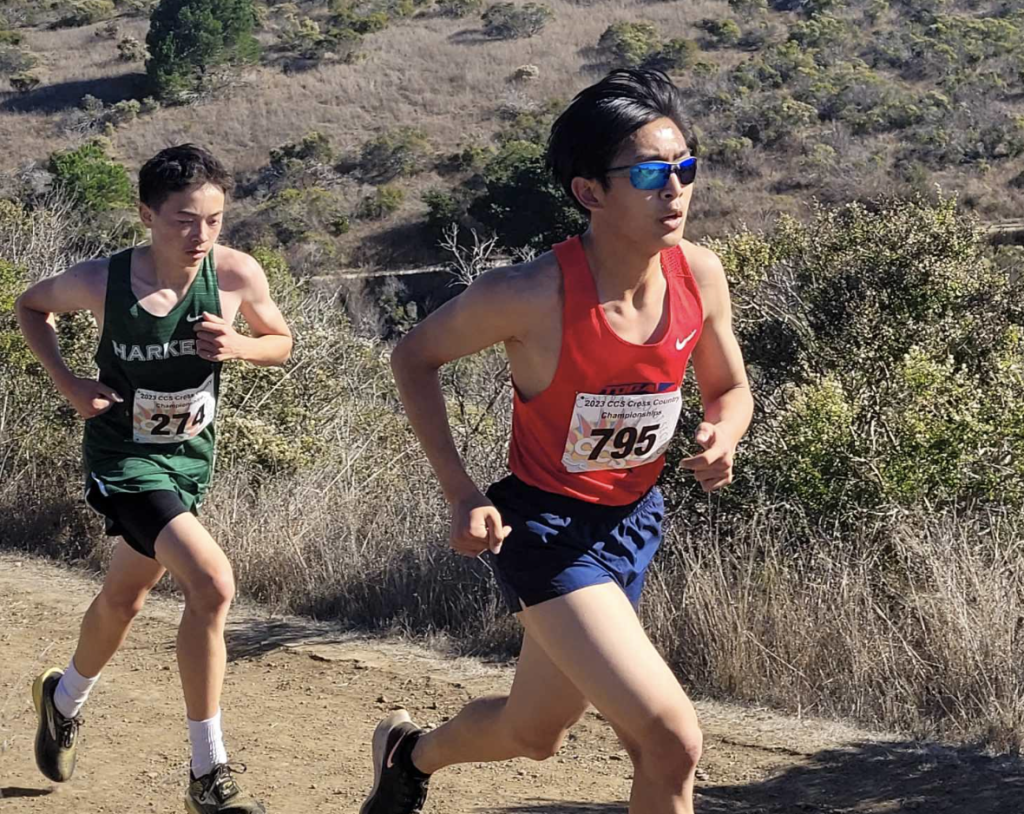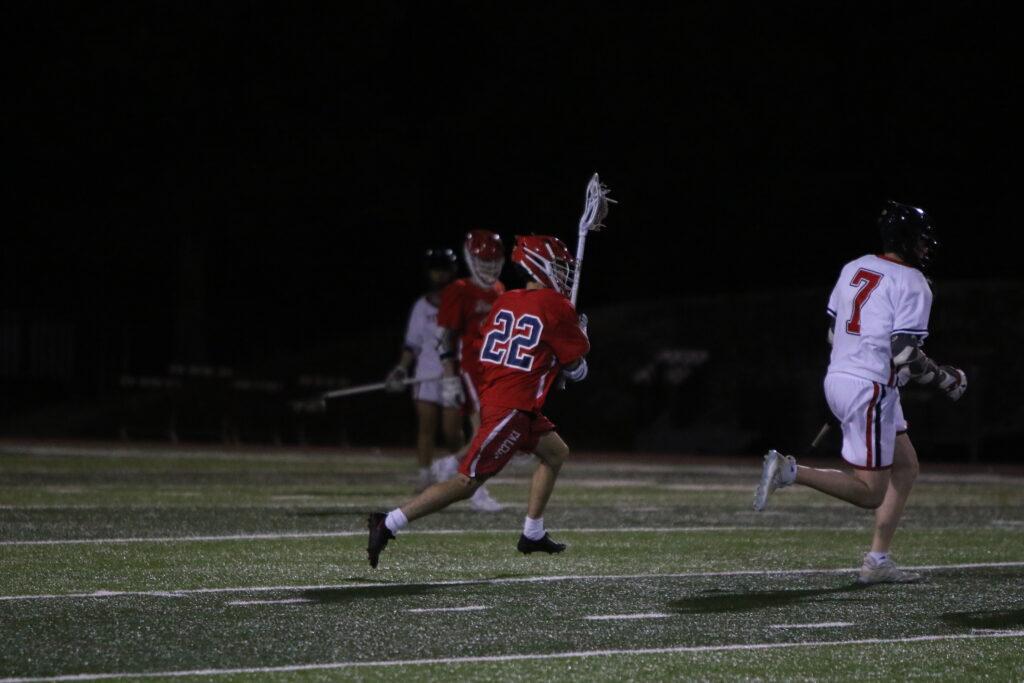The cross country team competed in the De Anza League Santa Clara Valley Athletic League Cross Country Championships and CCS Cross Country Championships races at Crystal Springs Park on Oct. 31 and on Nov. 11, respectively.
In the De Anza League Division of SCVAL Finals, both the boys and girls placed sixth out of seven teams. This race determined the top seven roster for the boys and the girls that competed in the November CCS Championships, which in turn determines whether the team will qualify for the 2023 CIF State Cross Country Championships on Nov. 25. No SHS runner qualified this year.
The seven boys who advanced to CCS were senior Jacob Merill; juniors Tas Long and Dylan Sordello; sophomores Jack Dong, Jacob Gechilk and Jack Tong; and freshmen Samarth Hangud. The seven girls who competed in CCS were juniors Richa Kandlikar and Anisha Rahut; sophomore Annika Gho; and freshmen Emma Merrill, Neha Sharan, Aradhita Singh and Suzy Xie. The boys placed 10th out of 11 teams at CCS, while the girls placed 10th out of 12 teams. The three fastest times for the boys are Jacob Merill running 17 minutes and 32.4 seconds, Dong running 18 minutes and 0.4 seconds, and Sordello running 18 minutes and 40.9 seconds. The three fastest times for the girls are Rahut running 21 minutes and 57 seconds, Sharan running 24 minutes, and Gho running 24 minutes and 19.3 seconds.
In order to prepare for these meets, the team began tapering their mileage down to work on short-distance runs.
Over a span of four weeks, they decreased their weekly mileage from 30 to approximately 20 miles, the approximate weekly mileage at the start of the season. They also went from three to four aerobic runs per week to two. Their last aerobic runs were also shorter, ranging from three to four miles rather than six miles.
Less aerobic runs lead to more anaerobic workouts. Some of the team’s staple anaerobic sessions included five repetitions of 1000 meters, 16 repetitions of 200 meters and hill repeats.
These shorter distances allowed the athletes to develop their fast-twitch muscles (muscles that help with producing short bursts of energy) and speed, while the aerobic runs typically do the opposite by developing the slow-twitch muscles, which are necessary to have strong endurance.
Hill repeats not only do develop their fast-twitch muscles, but also help runners have more experience in running up hills, which is necessary because of the prevalence of hills in cross country races. At Crystal Springs Park, which is renowned and frightening for its lofty elevation change throughout the course of the race, it’s especially useful to have these skills.
“Hill repeats have helped me bring my Crystal Springs Park course time down, as I went from 21:09 last year to 20:35 this year,” senior Neil Miller said.
Going through hill repeat workouts also helps runners have a stronger sprint finish at the end of their races, which can have a vast impact in terms of individual and team placing.
Even though the runners experience aching muscles from these grueling anaerobic workouts, they still find a way to turn it into a treat rather than a punishment.
“Running is rewarding because I can beat my own times and run long distances, making me feel a sense of pride,” Miller said.



























